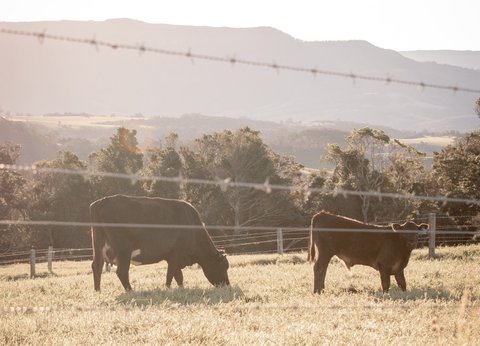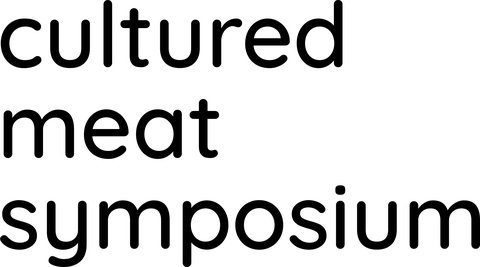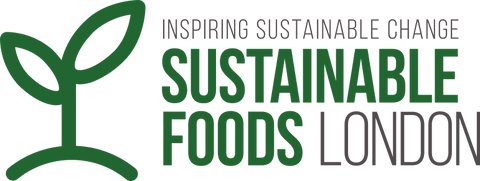How Cellular Agriculture Can Strengthen Australia’s Agtech Sector
July 28, 2020 - 5 min read
As global demand for protein grows steadily, our sources of animal protein must diversify to keep up. And Australia is well placed to become an international powerhouse for an emerging research field that could transform the way we produce and eat meat: cellular agriculture.
The cellular agriculture industry develops animal products – such as meat, eggs, and leather – without the need for conventional animal agriculture. The technology could have major implications for the environment, animal welfare, biodiversity, and human health.
So far, the US dominates the "alternative protein" space. But cellular agriculture has recently become a compelling opportunity for entrepreneurs and investors in Australia, thanks to our internationally renowned expertise in both the animal agriculture industry and the stem cell and biomaterials research sector.
All hands on deck
Like any emerging industry, cellular agriculture will create new markets, new applications, and new jobs – particularly for those with STEM skills. As the number of university graduates in STEM surpass the number of available jobs in Australia’s current economy [1], a new interdisciplinary field such as cellular agriculture would be a welcome opportunity for job seekers.
Developing cultivated meat has a number of scientific and technological challenges. But before cultivated meat products can be found on supermarket shelves or in restaurants, issues surrounding regulation and consumer acceptance remain to be resolved. A social license for cultivated meat that is specific to the Australian context is necessary for commercial viability. Policy makers, social scientists, and marketing experts with background knowledge of Australian regulatory frameworks and consumer behavior will be required to ensure cultivated meat is not subjected to the same criticisms - and ultimate downfall - as GMOs.
As with traditional livestock farms, future cultivated meat "farms" will also provide manufacturing jobs in large-scale cell cultivation and food processing, particularly in regional areas.
Since 2018, three cultured meat companies have been founded in Australia: Heuros, VOW, and, more recently, Cass Materials. Each company focuses on a different component of the cultivated meat puzzle: serum-free cell culture media, cell lines, and 3D scaffolds, respectively.
So how does Australia compare to the international cellular agriculture industry?
According to the Good Food Institute, a US-based multinational nonprofit organization, 22 companies working on developing cultivated meat or cellular agriculture technology (such as bioreactors or biosoftware) have been founded in the US alone since 2015. Israel and the UK tie for second place, each with five companies working in the sector since 2015 and 2016, respectively [2].
Fortunately, R&D within the cellular agriculture industry has been rapidly expanding in Australia over the past two years, with several universities jumping in on this massive commercial opportunity.
The Future Food Hallmark Research Initiative is a new research collaboration led by the University of Melbourne, spanning five faculties within the university as well as external research partners, government, and industry. The Initiative unites researchers in food policy and regulation, consumer insight, human health and nutrition, agriculture, food processing, chemistry, and engineering. This collaborative effort focuses on developing and producing sustainable, healthy, and affordable protein products, including plant-based meats and nutritious proteins derived from insects and algae.
In 2019, the initiative funded several research projects currently underway. A second round of seed funding for research projects in 2020-2021 will be announced later this year.
Not if, but when
The question of whether cellular agriculture will be a major player in Australia’s economy is not a matter of if, but when – and in what form. The global demand for protein is increasing significantly and traditional production will need to be supplemented by non-animal-based sources [3][4]. It’s no surprise, then, that the world's cultivated meat market is predicted to grow by US$200 million during 2020-2024 [5]. It’s clear Australia can be a leading producer and exporter of cellular agriculture technologies and high-quality cultivated meat products akin to Wagyu steaks and Australian grass-fed beef. Otherwise, we’ll rely too heavily on traditional animal agriculture, only to find ourselves in 10 years' time dependent on importing alternative protein products from international markets.
Farming and animal agriculture have been core to every culture around the world for thousands of years and will continue to be so. Cellular agriculture isn’t a replacement for that, but an addition to our existing agricultural sector and food industry.
If the goal is to secure the future of Australia’s agriculture industry, then the strategy must be to maximize economic benefits and minimize the ecological impacts of meat production, while also meeting growing consumer demand. Collaboration and coexistence between animal agriculture and cellular agriculture is one way to do that. Diversification into new protein markets will also allow Australia’s meat industry to maintain global competitiveness, encourage innovation, and future-proof our food systems. Cellular agriculture also provides alternatives to omnivores who are environmentally conscious or are concerned about animal welfare.
Australia has previously struggled with technological changes in energy, transport, and telecommunications. Just look at the A$2.2 billion blow-out of the National Broadband Network [5]. The good news is that the government is currently providing significant funding and legislative support for agtech and food-tech research, innovation, investment, and commercialization efforts. Let’s make sure we don’t fall behind in this agricultural revolution.
References:
[1] A. Patty, “The Sydney Morning Herald,” 14 April 2019. [Online]. Available: https://www.smh.com.au/business/workplace/glut-in-demand-for-science-gr…. [Accessed 25 July 2020].
[2] Good Food Institute, “GFI Company Database,” 2020. [Online]. Available: https://www.gfi.org/resources.php. [Accessed 25 July 2020].
[3] Food Innovation Australia, “Protein Market: Size of the Prize Analysis for Australia,” March 2019. [Online]. Available: https://fial.com.au/Attachment?Action=Download&Attachment_id=200. [Accessed 25 July 2020].
[4] OECD/FAO, “OECD-FAO Agricultural Outlook 2018-2027, Chapter 1,” 3 July 2018. [Online]. Available: http://www.fao.org/publications/oecd-fao-agricultural-outlook/2018-2027…. [Accessed 25 July 2020].
[5] Technavio, “Cultured Meat Market by Product and Geography - Forecast and Analysis 2020-2024,” Technavio, November 2019. [Online]. Available: https://www.technavio.com/report/cultured-meat-market-industry-analysis. [Accessed 25 July 2020].
[6] M. Bailey, “NBN Co hopes for enterprise saviour after $2 billion blowout,” Financial Review, 31 August 2018. [Online]. Available: https://www.afr.com/politics/federal/nbn-co-hopes-for-enterprise-saviou…. [Accessed 25 July 2020].

















